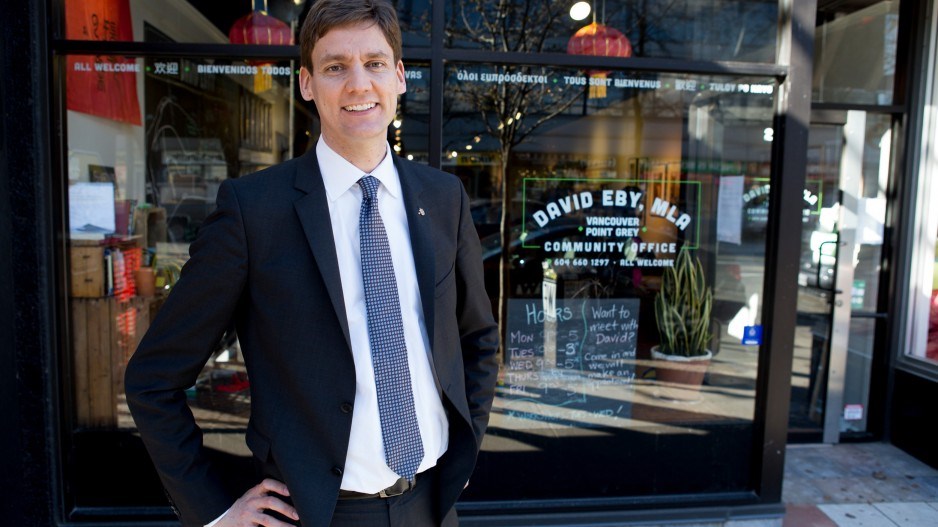British Columbians will be asked to vote on switching to proportional representation a year from now, but the referendum itself is disproportionate, with the Lower Mainland and political activists potentially deciding the outcome of the vote for all British Columbians.
That’s one of the potential outcomes of the referendum thresholds set by the provincial government, according to one political scientist who is writing a series of papers on the topic.
The B.C. government on Thursday November 23, launched a $1 million engagement process to get feedback on the referendum that will be held in November 2018 to change B.C. current first-past-the-post voting system to proportional representation.
“We want British Columbians to help us design the vote itself,” said B.C. Attorney General David Eby.
But British Columbians won’t have a say on one of the most important questions: what will the thresholds be? The government has already decided that.
Unlike the referendum on the single transferrable vote (STV) held in 2009, which set the threshold at 50% of 60% of the ridings, the referendum to be held in 2018 will be a simple majority of 50% plus one vote, province-wide.
“Those are hardwired,” Eby confirmed at a press conference. “Those are not part of the consultation. The consultation is about what should the ballot question be, should proponent or opponent groups be funded, what should the spending rules be and so on.”
That’s a problem, says Lydia Miljan, a political scientist at the University of Windsor.
Had the threshold been set at 50% in 50% of B.C. ridings, the vote itself would be more proportional.
But because it’s a simple, province-wide majority, that means that the Lower Mainland, with a population of 2.8 million, will have a disproportionate weight in the outcome of the vote for the rest B.C., which has a total population of 4.6 million.
“The (greatest) number of people in British Columbia live in the Lower Mainland, so they would be the ones that have a disproportionate amount of sway in the referendum outcome,” Miljan said.
“I think a question that I would like to ask the government is how committed are they to proportionality? Is it just rhetoric so that they can change the rules to make it more likely that they have power, or is it a fundamental value? Because if it’s a fundamental value, then the referendum itself betrays that.”
Another problem with the referendum is that there is no turnout threshold.
Since stand-alone referendums tend not to get the same level of voter participation as general elections, it’s conceivable that only a small fraction of British Columbians might end up casting a vote in a mail-in ballot.
“What if the voter turnout’s only 25%, for example?” Miljan asks. “Would that be a valid result?”
The answer to that question from the Attorney General’s office is “yes.”
Even if only 10% of registered voters cast a vote in the referendum, it would be valid, the ministry confirmed.
“That‘s a really important thing to factor in,” Miljan said, “because referenda don’t always get the same turnout as a general election.
“If you have it coupled with a general (election), which was what they did in Ontario, it’s more likely that people are engaged in this question. If you just have a referendum in itself, then you are only going to have people with very strong opinions. So turnout is important.”
With no threshold for voter turnout, it means political activists and fringe parties could have a disproportionate influence on the referendum outcome, if voter response is low.
“It ends up being captured by people with a vested interest in the topic,” Miljan said. “You have to have some thresholds, because it’s a fundamental change. When you’re changing the rules of the game, you want big buy-in.
“I would think that you would want at least 60% of the population voting on it, otherwise it’s not really valid. If you have less than half of the people voting and, of those, only half of them saying they want change, that’s a pretty low mandate.”
She said the question itself will be important. There are several types of proportional representation. The STV system that B.C. voted on in 2009 is just one.
Eby said the referendum question or questions will be decided through the current public engagement process. British Columbians are being asked to fill out online surveys as part of the enngagement process. The deadline for public input is February 28, 2018.
Based on feedback from the public engagement, a report will go to cabinet, which will decide what questions or questions will be asked in a November 2018 mail-in ballot question.




